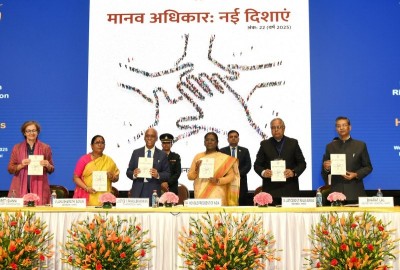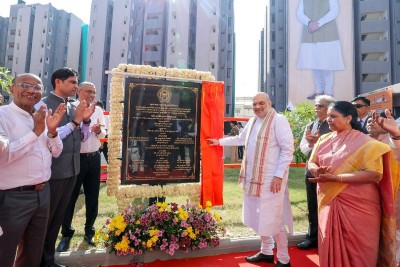 Road-Transport Safety
Road-Transport Safety
Indigenous Intelligent Transportation Systems (ITS) Solutions for Indian traffic scenario launched under InTranSE -II Program
New Delhi: Ministry of Electronics and Information Technology (MeitY) has launched an indigenous Onboard Driver Assistance and Warning System – ODAWS, Bus Signal Priority System and Common SMart iot Connectiv (CoSMiC) software.
The product was developed as a joint initiative by the Centre for Development of Advanced Computing (CDAC) and the Indian Institute of Technology Madras (IIT-M) under the Intelligent Transportation System Endeavor for Indian Cities Phase-II initiative of MeitY.
Mahindra and Mahindra was the industrial collaborator for the project.
What is Onboard Driver Assistance and Warning System – ODAWS?
ODAWS incorporates vehicle-borne sensors for monitoring driver propensity and vehicle surroundings to deliver acoustic and visual alerts for driver assistance.
The project involves the development of sub-modules such as the navigational unit, driver assistance console, and mmWave radar sensor.
The positional and dynamic characteristics of surrounding vehicles are probed using mmWave radar sensors.
The navigational sensor provides a precise geo-spatial orientation of the vehicle as well as trends in driving behaviour.
The ODAWS algorithm is used to interpret sensor data and offer real-time notifications to the driver, boosting road safety.
Why has it been created?
With improved highway infrastructure and an increase in the number of vehicles, speed on roads has increased, further exacerbating safety concerns.
As per the Ministry of Road Transport and Highways of India (MoRTH), in around 84 percent of cases, "driver error" was cited as the cause of the accident.
What is Bus Signal Priority System?
Bus signal priority System is an operational strategy that modifies normal traffic signal operations to better accommodate in-service public buses at signal-controlled intersections.
Unlike a blind priority that is given for emergency vehicles, here it is a conditional priority, which is given only when there is an overall reduction in delay for all vehicles.
The developed system will enable to minimize person delay by providing priority to public transport buses, either through Green extension or Red truncation, considering all vehicles approaching a signalized intersection.
Why Bus Signal Priority System ?
Poor reliability of the public transport system is a major reason for people to opt for personal vehicles. Improving this is essential to attract more travellers to public transport, thus leading to a more sustainable traffic solution. One of the major causes of delays for public transport buses in urban arterials is the delay at signalized intersections.
What isCommon SMart iot Connectiv (CoSMiC)?
It is a middleware software providing standard-based deployment of IoT adhering to oneM2 M-based global standard.
It facilitates users and application service providers in various vertical domains to use application-agnostic open standards and open interfaces for end-to-end communication with well-defined common service functionalities complying with oneM2M standard.
The horizontal silo architecture ensures interoperability and data exchange between different IOT devices and applications and avoids vendor lock-in. CoSMiC comply with 12 common service functions which are Registration, Discovery, Security, Group Management, Data Management & Repository, Subscription & Notification, Device Management, Application & Service Management, Communication Management, and Delivery Handling, Network Service Exposure, Location, Service Charging and Accounting.
Why CoSMiC?
CoSMiC common service layer is used to interface any vendor specific standards and for increasing interoperability with smart city dashboard.
Support Our Journalism
We cannot do without you.. your contribution supports unbiased journalism
IBNS is not driven by any ism- not wokeism, not racism, not skewed secularism, not hyper right-wing or left liberal ideals, nor by any hardline religious beliefs or hyper nationalism. We want to serve you good old objective news, as they are. We do not judge or preach. We let people decide for themselves. We only try to present factual and well-sourced news.







